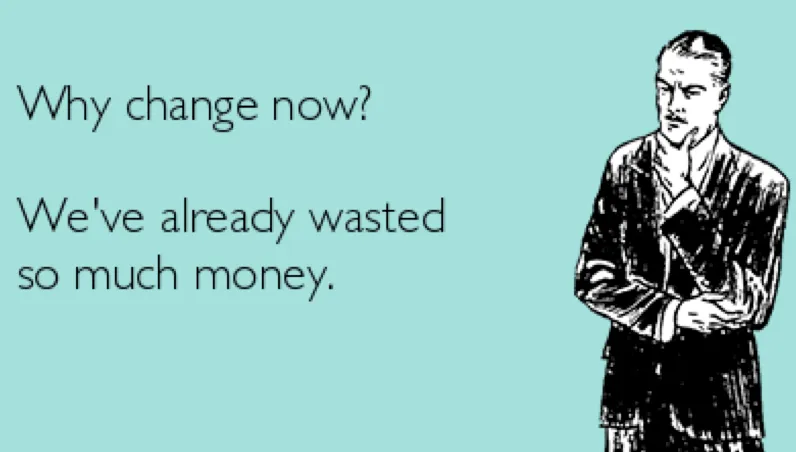The Sunk Cost Fallacy
Cognitive biases are systematic errors in thinking that can affect decision-making and problem-solving processes. One such cognitive bias is the sunk cost fallacy, which refers to the tendency to continue investing in a project or decision despite evidence that it is not working

Introduction
Cognitive biases are systematic errors in thinking that can affect decision-making and problem-solving processes. One such cognitive bias is the sunk cost fallacy, which refers to the tendency to continue investing in a project or decision despite evidence that it is not working or yielding the desired results. This article will explore the sunk cost fallacy in problem-solving and its implications.
Understanding the Sunk Cost Fallacy
The sunk cost fallacy arises from the human tendency to consider past investments (whether financial, time, or effort) as relevant factors in decision-making. It is based on the flawed assumption that the resources already invested should influence future decisions, even when those investments are irrecoverable and should not affect the outcome.
Examples of the Sunk Cost Fallacy
To illustrate the concept, consider the following examples:
Investments in failing projects: A company continues to pour money into a failing project because it has already invested a significant amount of time, money and effort. Despite evidence that the project is not viable, the decision-makers are reluctant to abandon it due to the sunk costs.
Personal relationships: Individuals may stay in toxic or unfulfilling relationships because they have invested a significant amount of time and emotional energy. The sunk cost fallacy leads them to believe that ending the relationship would render their past investments meaningless.
Implications in Problem Solving
The sunk cost fallacy can have detrimental effects on problem-solving processes. Here are some key implications to consider:
Loss of objectivity: When individuals are influenced by sunk costs, they may lose objectivity and fail to evaluate the situation based on its current merits. This can lead to poor decision-making and an inability to adapt to changing circumstances.
Escalation of commitment: The sunk cost fallacy can lead to an escalation of commitment, where individuals invest even more resources into a failing project or decision in an attempt to justify their past investments. This can result in a waste of time, money and effort.
Missed opportunities: By focusing on sunk costs, individuals may miss out on alternative solutions or opportunities that could yield better outcomes. This narrow-minded approach restricts creative problem-solving and limits the exploration of new possibilities.
Overcoming the Sunk Cost Fallacy
Recognising and overcoming the sunk cost fallacy is crucial for effective problem-solving. Here are some strategies to mitigate its influence:
Separate sunk costs from future decisions: When evaluating a problem or decision, consciously separate the sunk costs from the current situation. Focus on the potential future benefits and costs, rather than past investments.
Seek external perspectives: Engage with others who are not invested in the project or problem. Their unbiased viewpoints can provide fresh insights and help challenge the influence of sunk costs.
Consider opportunity costs: Evaluate the potential gains and losses associated with alternative decisions. By considering the opportunity costs, individuals can make more rational choices based on future prospects rather than past investments.
Regularly reassess decisions: Continuously reassess the viability and effectiveness of ongoing projects or decisions. This allows for timely adjustments and prevents the escalation of commitment based on sunk costs.
Conclusion
The sunk cost fallacy is a cognitive bias that can impede effective problem-solving. By understanding its influence and implementing strategies to overcome it, individuals can make more rational decisions and avoid wasting resources on futile endeavors. Recognising the irrelevance of sunk costs and focusing on future prospects is essential for successful problem-solving.



